5 Lighting Hacks Designers Love for a Bright, Beautiful Home
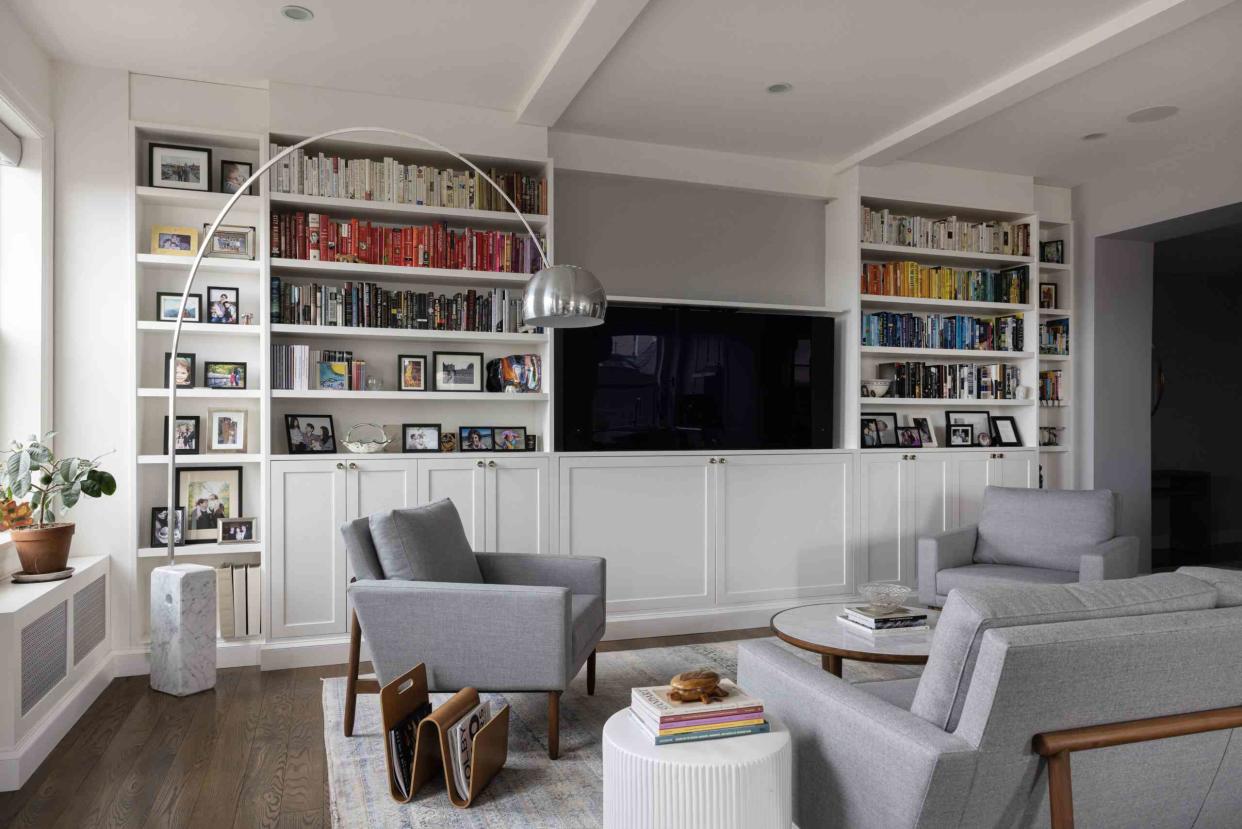
If you've ever marveled at the cozy ambiance of a room, chances are a great lighting scheme was at work.
The truth is that most rooms don't rely on a single source of light but instead utilize a thoughtful mix of recessed lighting, overhead fixtures, and eye-level lamps or sconces. Interior designers are pros at whipping up these brilliant lighting schemes, but for DIY decorators, it's easy to feel lost in the dark.
To help, we asked a group of design pros to share their brightest lighting hacks—one-step fixes that can upgrade your lighting game in a flash. Follow these five time-saving shortcuts to take your home's lighting scheme from basic to radiant.
Want more design inspiration? Sign up for our free daily newsletter for the latest decor ideas, designer tips, and more!
Consider Your Bulbs
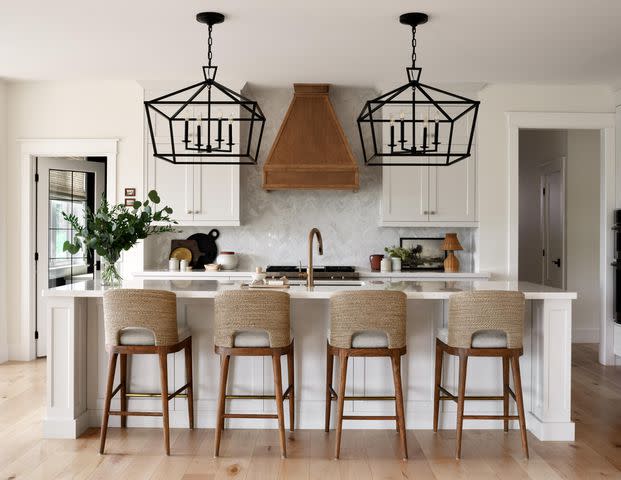
We often put a lot of effort into choosing a light fixture, while giving relatively little thought to the bulbs we place inside it.
“Remember to consider the color temperature, also known as kelvin, as well as the brightness, also known as lumens, of your bulbs,” says designer Candace Plotz of Candace Plotz Design.
A good portion of light fixtures offer 2700 kelvins, which many designers find to give off a light that is too yellow, making a room look outdated rather than cozy. To achieve a warm-feeling glow, try aiming for around 3000 kelvins for all of your bulbs.
Additionally, be consistent with the color and kelvin of bulbs you choose. For instance, don’t mix warm and cool color temperature lightbulbs.
Spotlight a Room’s Delightful Details
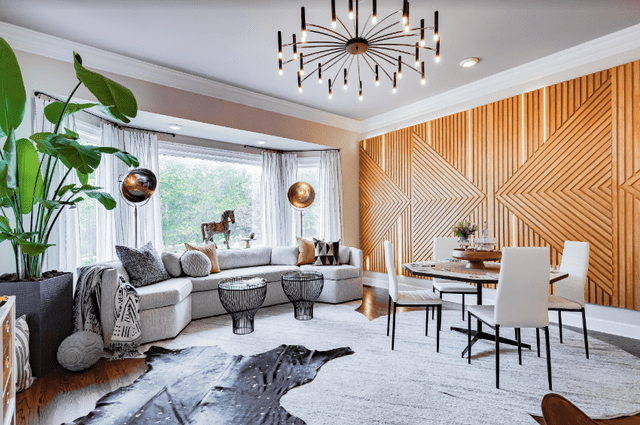
Studio Q Designs / Photo by Maryland Photography Inc.
One secret of a beautifully lit room is that not all lighting needs to exist to be purely functional.
Designer Quintece Hill-Mattauszek of the design firm Studio Q, loves using creative lighting options to highlight decorative details in a room, be it a built-in architectural feature like an arched doorway, or a furniture feature such as bar cabinet's highly-decorative wood grain.
“I love incorporating lighting to highlight design details to create visual patterns,” Hill-Mattauszek says. “It adds that wow factor to a room and makes a space feel more inviting and interesting!”
Consider, for instance, using sconces to spotlight a wall covered in textural grasscloth wallpaper, shiplap, or another decorative wood treatment. The sconce’s light will create beautiful shadows on the textural walls, uniquely highlighting them.
Rethink Recessed
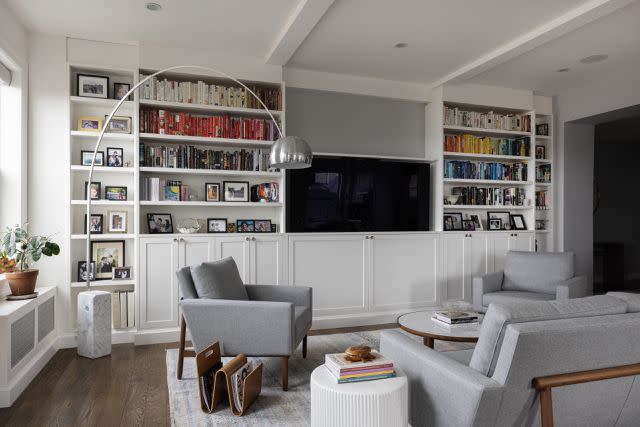
For many years, recessed lighting was considered the holy grail of lighting. However, functional as they are, recessed lights can create an unappealing glare.
“I try to avoid recessed lights as much as possible,” says designer Paulina Hospod of Aha Interiors. “But if I need them, I use ones that are lensed or reflect light up instead of down.”
In her own projects, Hospod is a fan of flanged indirect downlights.
“Instead of regular LED beams pointing down, these point up from the edge and reflect the light down from its dome,” Hospod says. “This reduces that typical glare you get when looking at regular recessed lights.”
Hang Overhead Fixtures Strategically
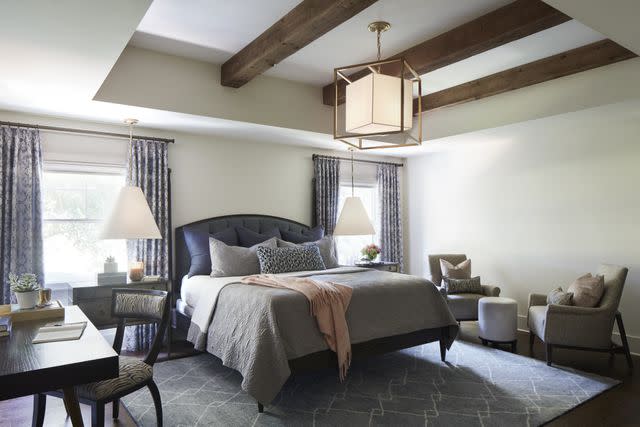
It might seem intuitive to place an overhead fixture in the center of a room, but according to designer Sandra Funk of the design firm House of Funk, this isn’t a hard-and-fast rule.
“In a bedroom, one of my rules of thumb is to center an overhead fixture above the bed,” Funk says. “Even if your bed is not in the center of the room, center your fixture 18 inches above the bottom of the bed so that the light is over your feet when you’re sleeping.”
Why is this arrangement so ideal?
“This will keep the light out of the way of you walking along the bottom of the bed,” Funk says. “And since you aren’t walking under it, you can get a taller fixture.”
Preset Your Mood Lighting

Different occasions warrant different lighting schemes. For instance, you likely turn on a different combination of lamps and overhead fixtures when entertaining than when you're reading at home alone.
Paulina Hospod of Aha Interiors, for instance, likes to put lamps on dimmers and connect them to smart home systems that allow you to create custom lighting “themes.”
“Smart home systems like Lutron Caseta work on an app, allowing you to automatically set scenes based on time of day or activity you are performing,” Hospod says. “Additionally, you can connect to Google Home or Alexa, so when you say ‘I'm having a party,’ a preset scene of different lights will automatically switch on.”
Read Next: 5 Easy IKEA Hacks Using Cult-Favorite Pieces (Including the BILLY Bookcase)
Read the original article on The Spruce.

